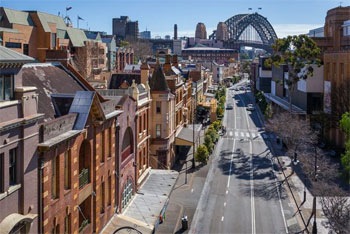-
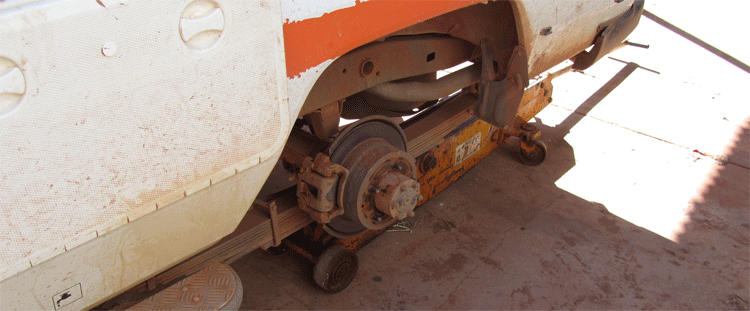
4wd Saftey tips for travel around AustraliaDriving around Australia is an awesome experience.
Crossing Water in a 4WD
The great thing about travelling in a 4WD is that you can cross water (within reason!)
There are some things to consider but if you follow these few basic rules you won�t get caught and will have a lot of fun! Most importantly, the water shouldn�t be above the centre of your wheels and we recommend you take particular care when attempting to cross. Crossings where the water is washing over the bonnet are the territory of experts only, who do this in specially prepared vehicles that the owners don�t mind trashing.
The 5 golden rules (Thanks Jackie C and Damien S at team)
1. Check out the water safely before you go in (depth, bottom and where you will exit)
2. Reduce tyre pressure for grip
3. Plan a path across the water
4. Go in slowly and cross slowly and steadily (less than walking pace)
5. If the water looks like it will be above the wheel hubs consider not crossing at all
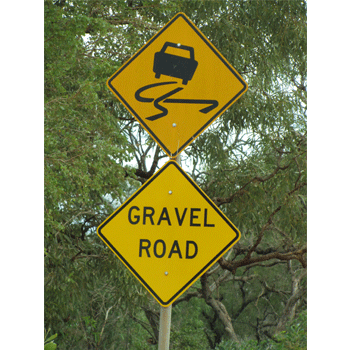
In more detail
Before you go in
Think. Is it safe to cross? Is it too deep? Flowing too fast? If you are up north, are there crocodiles? Talk to people.
Check the depth of the water if possible and the bottom. Is this soft or rocky? Are there any holes that you could get stuck in?
Work out a path to follow. If possible, watch someone else go first!
Make sure you are in full 4WD.
Check and lower your tyre pressure if the far bank looks slippery and you might benefit from extra traction. You release pressure from your tyres by taking off the valve cap and depressing the valve spring that looks like a little stalk inside the valve. It�s important to not use anything that could cause damage. The head end of a bullet-head nail is a good tool for this.
If the crossing is deeper than halfway up the wheels, it�s a good idea to carry a small tarp that you can put over the front of the vehicle and secure with the bonnet. This will reduce the amount of water that enters the engine bay
Have your windows down so you can exit the 4WD if something does go wrong � though you shouldn't be in water anywhere near that deep! Entering the water
Don�t go in too quickly. Just creep in at less than walking pace. Second gear in low range is the usual gear of choice (find out what low range and other 4WD terminology means in our blog about how to drive a 4WD). Crossing
Once you are in, accelerate gently and maintain a steady pace to create a bow wave.
Avoid changing gear if possible. This can let water into the clutch plates and increase slip. Coming out of the water Britz Outback 4WD going over a bridge
This obviously depends on the bank or lack of it on the far side. If you have had a good look at this as per �before you go in� this should be fine.
Keep it steady, avoid wheel spin and let the car climb out. If there is a problem
Say you get stuck � this is very, very unlikely if you follow the rules above, but if you do � just keep the engine running. This stops water entering the engine from the exhaust end.
If you stall, restart the engine and move on. Sometimes that might mean backing up before going forward again or finding another way.
If you do get stuck, say in a hole you can�t get out of, stay with the vehicle and await help. If it�s too much for the vehicle, it�s certainly much too much for you. You will find other people will be generally happy to help out.
To help you relax and enjoy the drive here are some basic road rules to follow. If you will be arriving on long-haul flights we recommend you plan to spend your first night in Australia in your arrival city to ensure that you are rested after your flight.? �In Australia we drive on the left hand side of the road.
Everyone in the vehicle must wear a seat belt when the vehicle is moving.
Always carry a copy of your driver licence in English. If using an international permit, you must also carry your original driver licence.
Drive no faster than the speed limit signs allow; and slower in rain or fog.
Alcohol and driving don�t mix. For experienced drivers the blood alcohol level is 0.05. Provisional drivers and young drivers may not have any alcohol before driving.
Fatigue causes many crashes in Australia. When driving long distances, stop and rest every 2 hours minimum we at Australia 4WD REntals suggest even shorter distances and times of say 30 mins..
All traffic must proceed in a clockwise direction in a roundabout. A vehicle already on a roundabout has right of way over any vehicles entering.
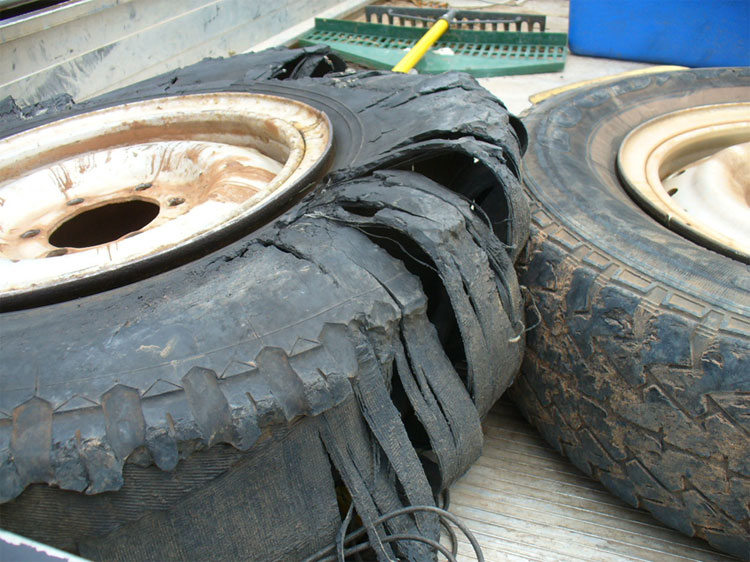
-


Australia 4 Wheel Drive RentalsAustralian 4 Wheel Drive Rentals will help you plan your next road trip in Australia
Plan your upcoming vacation so you're trip will be a rewarding and relaxing holiday in Australia
For those Aussies old enough remember the Christmas and school holiday vacation road trips around Australia in a car and tent or caravan
Well here you can relieve those memorable moments with your family and friends or just yourself
Here is just some of our fleet available
Get a instant quote now | email us | fill in a quote request | call us
-
 4wd Adventure Camper
4wd Adventure Camper4wd Poptop Roof camper for 2 ideal for those wanting to sleep inside. Includes camping gear
View 4WD here - Email us for a request -
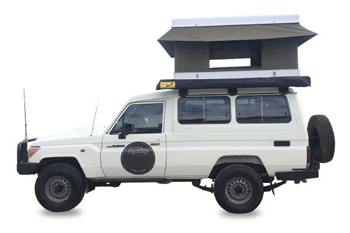 4wd RTT Camper
4wd RTT Camper4wd Roof Tent camper for 2 ideal for those wanting to sleep inside. Includes camping gear
View 4WD here - Email us for a request -
 4wd ADVR Camper
4wd ADVR Camper4wd camper for 4 ideal | seats 5 | gear for 2 opt. extra gear | Alice, Broome, Darwin, Adelaide
View 4WD here - Email us for a request -
 4wd Extra Cab
4wd Extra Cab4wd Roof Tent camper for 2. Great for unsealed roads. Includes camping gear, bedding, linen + cooking gear
View 4WD here - Email us for a request -
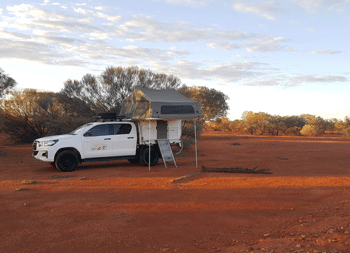 4wd Dual Cab
4wd Dual Cab4wd camper for 2 ideal for remote long trips. Includes camping gear, bedding, linen + cooking gear
View 4WD here - Email us for a request -
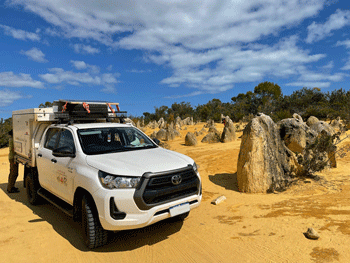 4wd car
4wd car4wd with camp package available Perth (all year), Broome and Darwin mid April to mid Oct
View 4WD here - Email us for a request
-
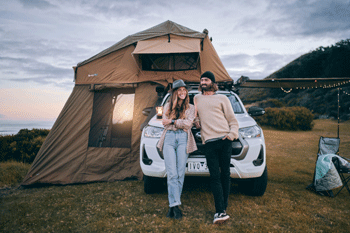 4wd Safari Camper
4wd Safari CamperRooftop tent 4wd camper for 2 and ground side annexe for 3 more. Includes camping gear, bedding, linen and cooking gear
View 4WD - Get a instant quote
-
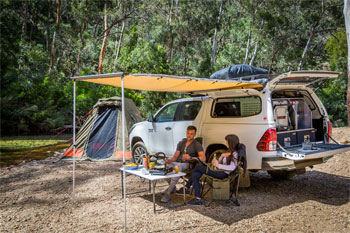 4wd Outback Camper
4wd Outback CamperNew for us the Outback 4wd camper for 5 and ground tent and awning. Includes camp gear, bedding, linen and cook gear
View 4WD - Get a instant quote
-
 4wd poptop 2024
4wd poptop 2024Seats 2 available Brisbane, Cairns, Perth year round, Darwin and Broome are seasonal in the Dry Season for 2025
View 4WD here - Email us for a request -
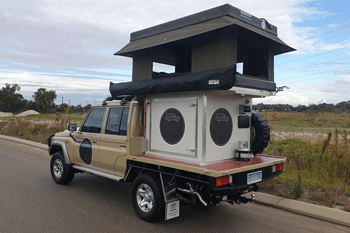 4wd RTT Camper
4wd RTT Camper4wd rooftop tent for 2. Available Perth all year, Darwin and Broome in the Top End 'Dry Season' After Easter to October
View 4WD here - Email us for a request -
 4wd Rooftop Camper
4wd Rooftop Camper4wd rooftop tent for 2. Available Perth all year, Darwin and Broome in the Top End 'Dry Season' After Easter to October
View 4WD here - Email us for a request -
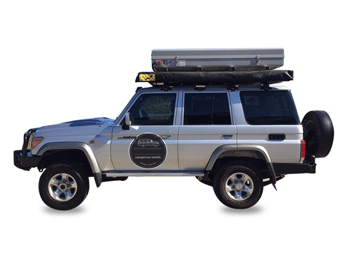 4wd Landcruiser
4wd Landcruiser4wd rooftop tent for 2. Available Perth all year, Darwin and Broome after Easter to October
View 4WD here - Email us for a request -
 4wd Prado
4wd PradoLandcruiser Prado 5 and 7 Passenger seat 4WD vehicle. Mainly Darwin return, also Perth + Broome
View 4WD here - Email us for a request -
 4wd Motorhome with Toilet/Shower
4wd Motorhome with Toilet/Shower4wd motorhome for 2 available from Perth for 28 days plus rentals. Oneways for long hire 2024
View 4WD here - Email us for a request -
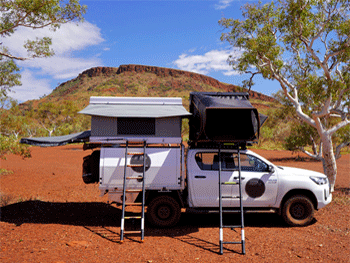 4wd camperfor outback roads twin roof top tent
4wd camperfor outback roads twin roof top tentThe 4wd twin roof top tents Perth (all year), Broome and Darwin mid April to mid October
View 4WD here - Email us for a request -
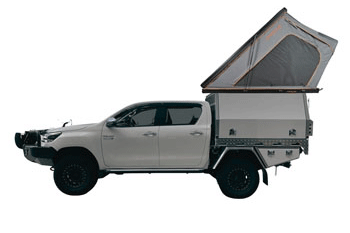 4wd advr 2 berth camper
4wd advr 2 berth camper4wd seats 5 | Sleep 2 - ground tent available for 3 more.Darwin, Broome and Alice
View 4WD here - Email us for a request
-
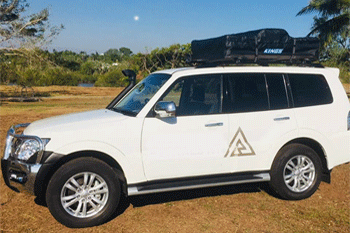 4wd Pajero
4wd Pajero4wd 5 Pax Pajero GL | Modern 4wd seats 5 | Ex Darwin, Alice, Broome allowed on most unsealed roads Top End
View 4WD here - Email - Quote form
-
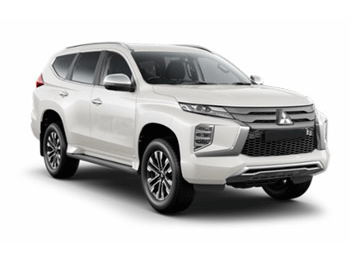 Airport 4wd hire
Airport 4wd hire4wd wagon from Airport for Gibb Rd and Mereenie Loop - Alice, Broome and Darwin oneway rentals allowed
4wd hire from airports -
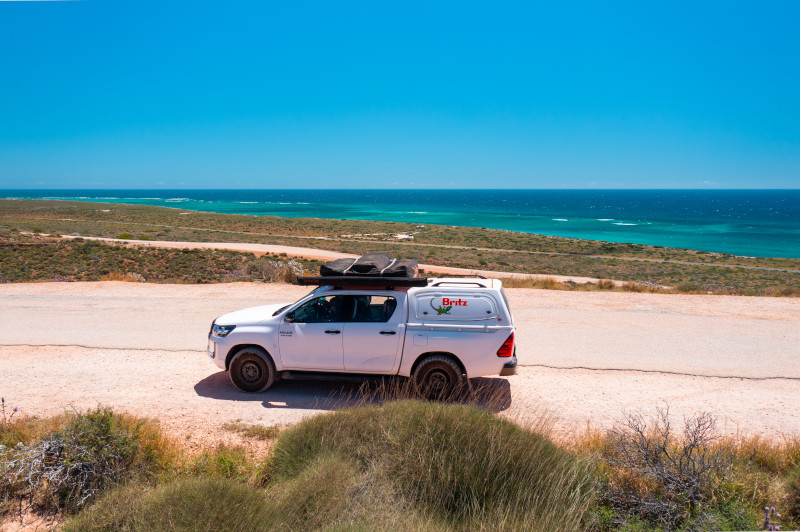

Australia 4 Wheel Drive RentalsAustralian 4 Wheel Drive Rentals your one stop shop for 4wd Cars and Wagons, 4wd's with tent gear, 4wd's with rooftop tents and side ground annexe | 4wd's and sleep internally.
Australian 4 Wheel Drive Rentals major suppliers have a large range of budget campervans to modern well appointed spacious automatic motorhomes from all states and territories.
Get a instant quote now or email us or fill in a quote request
-
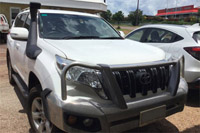 4wd wagon
4wd wagonGibb, Birdsville, Oodnadatta
4wd car for remote tracks -
 Camper Hitops
Camper Hitops2 to 4 Berth budget campervans
Campervan hire -
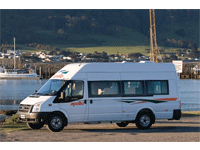 Camper 2ST
Camper 2ST2 Berth toilet | shower | kitchen
Campervan hire -
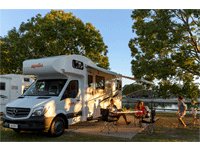 Motorhomes
Motorhomes4 Berth toilet | shower | kitchen
Motorhome rentals -
 Motorhomes
Motorhomes4 Berth toilet | shower | kitchen
Motorhome rentals -
 Worldwide
WorldwideCar - airport, town and city
Car hire Australia -

Key tourism destinations for 2wd driving in AustraliaBest places to start these key Australian Destinations are
Melbourne along The Great Ocean Road to Adelaide or to Alice Springs
Sydney one way to Cairns, Brisbane, Adelaide, or Melbourne
Perth loop trip or to Broome then onto Darwin
Yes you can see the inner wilderness and coastline in a 2wd motorhome rental even if you have to keep to the sealed roads. A lot of major suppliers we book allow you can travel on a unsealed road up to 12 Klm to a commercial campground and major tourist attractions.
Best time to travel in Australia
Safety tips on driving along Australian roads
Recommended camper and motorhome supplies
Get a instant quote now | email us | fill in a quote request | call us
-
 Start 4wd hire or campervan rental from Darwin
Start 4wd hire or campervan rental from DarwinStart from Darwin Australia travel loop or one way plan
Start Darwin -
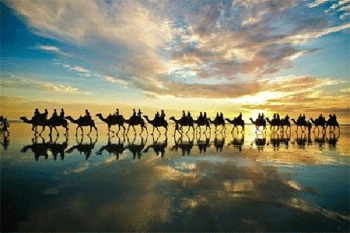 Start 4wd hire or campervan rental from Broome
Start 4wd hire or campervan rental from BroomeStart from Broome and go one way to Perth or Darwin
Start Broome -
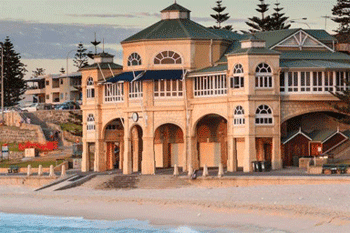 Start from your camper hire or 4wd rental from Perth
Start from your camper hire or 4wd rental from PerthStart Perth do loop or one way to Broome or Adelaide
Start Perth -
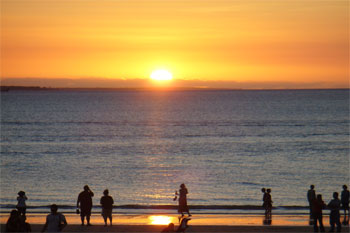 Start from your 4wd camper hire from Alice Springs
Start from your 4wd camper hire from Alice SpringsOur campers or motorhome are only from Alice Springs
Start Alice Springs -
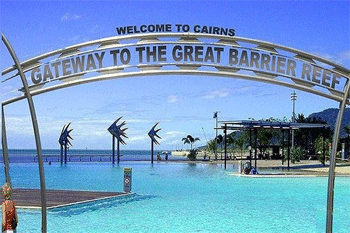 Start from your camper hire or 4wd rentals from Cairns
Start from your camper hire or 4wd rentals from CairnsStart from Cairns and travel south along the East Coast
Start Cairns -


Key tourism destinations for 2wd sealed road driving in AustraliaTravel Plan your next yearly holiday or vacation and start from Sydney, Melbourne, Hobart, Adelaide, Sydney or Brisbane and even Cairns. Travel one way in a self drive motorhome rentals across Australia at your own leisure and comfort. Cook what you want, stop when you want, even for that birding photo that you have to wait 20 minutes to snap. It's you holiday so if you don't want to part of a guide on a tight schedule and guided then the option is a motorhome hire and where else to search but here at Australia 4 Wheel Drive Rentals. Sure our name says 4wd rental hire but honestly we established so long ago and have built up a trusted brand we figured why change it.
Get a instant quote now | email us | fill in a quote request | call us

-
 100's of links
100's of links -
 Around Australia
Around Australia -
 What to bring
What to bring -
 Xmas Specials
Xmas Specials -
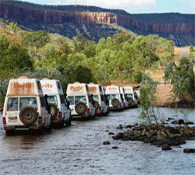 Convoy's
Convoy's -
 Eco Policy
Eco Policy -
 3 Month Special
3 Month Special -
 Weather
Weather -
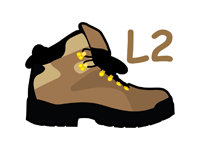 What to expect
What to expect -
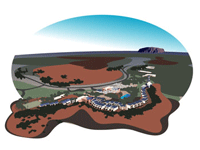 Confused Uluru
Confused Uluru -
 Safari Camps
Safari Camps -
 The Kimberley
The Kimberley -
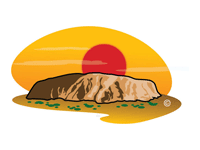 Uluru Ayers Rock
Uluru Ayers Rock -
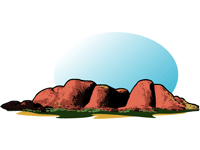 Kata Tjuta
Kata Tjuta -
 Katherine Gorge
Katherine Gorge -
 Arnhem Land
Arnhem Land -
 Devils Marbles
Devils Marbles -


AUSTRALIA 4 WHEEL DRIVE RENTALS GPO Box 3410, Darwin AustraliaAustralia 4 Wheel Drive Rentals
Australian Business No. 54 561 356 425
Australia 4 Wheel Drive Rentals Group - 48 Cavenagh Street Darwin, GPO Box 3410, Darwin Australia
Website: https://www.australia4wheeldriverentals.com/
Telephone International: +61 8 7999 7511
Telephone within Australia Toll free: 1800 107 371
Telephone within Australia: 08 7999 7511
Email: [email protected]
Office Hours: Mon-Fri 9am-7pm EST | Sat-Sun and Public Holidays 11am-3pm
Online and internet based specialists.
Hotel real time Availability
 read more
read more
Hotel Bookings - Wotif is Australia�s favourite online travel destination. Wotif started in the early dotcom days in 2000. Today it's one of Australia's most recognised brands for online travel agents. Great rates, wide range, easy-to-use site is popular for Australians to book their travel plans online.
-
